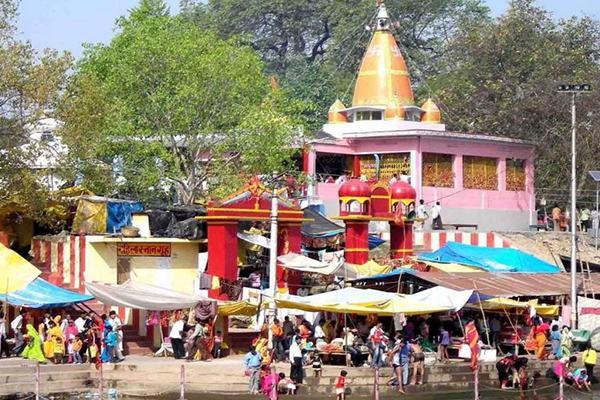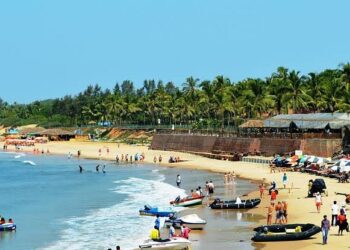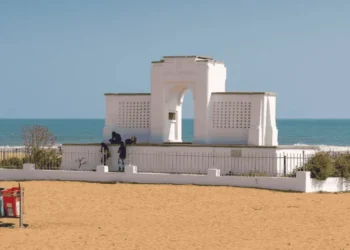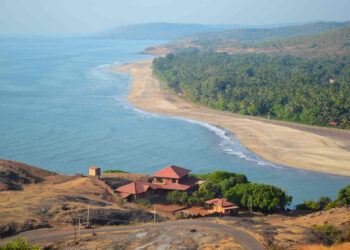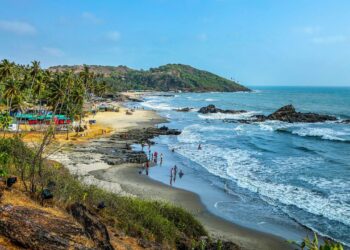Chandrika Devi Temple located in Kathwara village, near Lucknow, Uttar Pradesh, by the Gomti River, is a divine shrine dedicated to the worship of Goddess Chandrika, a form of Goddess Durga. This site and its surrounding region have held spiritual and religious importance since the era of the Ramayana. It is also known by the name Mahi Sagar Teerth. References to this temple can be found in sacred texts such as the Skanda Purana and the Karma Purana.
History of Chandrika Devi Temple
The Chandrika Devi Temple, located in Lucknow, is believed to have been constructed around 300 years ago in the 18th century by local landlords. The city itself is very closely associated with Lakshmana, the brother of Lord Rama, and holds deep religious importance in Hindu tradition. According to local accounts, the temple was established in reverence to Goddess Chandrika, who is said to have appeared in the forest to protect her devotees. Historical records indicate that the idol of the goddess was discovered approximately 250 years ago inside the hollow of a neem tree. Mentions of the temple are also found in ancient scriptures such as the Skanda Purana and the Karma Purana.
It is said that an even older temple, dating back to the Ramayana era, once stood in the same place but was destroyed during the 12th century by the invading forces of Sayyad Salar Masud Gazi. The current temple is built on a platform 30 feet high, accessed by 20 stone steps. During the 19th century, British writers observed and recorded the steady flow of devotees visiting the site. After 1947, the temple came under the administration of a state trust. Renovation work carried out in the 1990s preserved its original character. In earlier times, saints often composed hymns in praise of Chandrika Devi, which contributed to the temple’s prominence. Even today, the site continues to draw numerous pilgrims to this sacred corner of Lucknow.
Legends of Chandrika Devi Temple
One legend regarding the temple says once Rajkumar Chandraketu, son of Lakshmana, was lost in a dark forest with his Ashwamedha horse. He prayed to Mother Durga, who appeared with moonlight, guiding him. He built a temple here, naming her Chandrika for her moon-like glow. Devotees believe she still protects, and praying here with a true heart brings blessings and takes away troubles, as she is known for her power in the Skanda Purana.
Another tale says a villager in Kathwara saw the goddess in a dream 250 years ago, finding her idol in a nearby village. The idol was placed here, and a temple was built. Local stories tell of wonders, like devotees finding peace, health, or help with problems after praying here, keeping the temple sacred. Some say a pond, Sudhanva Kund, holds her spiritual presence. In Dvapara Yuga, Barbreek, Ghatotkacha’s son, worshipped here for three years on Krishna’s advice, gaining power. These tales bring people to pray for Chandrika’s blessings.
Architecture of Chandrika Devi Temple
The Chandrika Devi Temple sits on one acre by the Gomti, made in a simple North Indian style. The main part has a low stone top, carved with Durga’s lion, trident, and moon, all in black stone. Inside, the Chandrika Devi idol, a 3-foot rock with three heads covered in red sindoor, stands with a sword in her right hand and a lotus in her left. A 2-foot idol of Lakshmi, her sister, is nearby, lit by oil lamps.
A small hall within the temple is supported by four stone pillars, each carved with images of Durga’s weapons and gods. In the courtyard, there are smaller stone shrines dedicated to Hanuman, Shiva, and Saraswati. The Hanuman shrine shows him holding a mace, symbolizing strength. The Shiva shrine, dating back to the 1300s, houses a lingam representing power. The Saraswati shrine depicts her with a veena, signifying wisdom. A plain gate bears the face of Durga. At the river’s edge is a water ghat used for ritual bathing. Nearby, the Sudhanva Kund pond holds a large statue of Shiva.
Rituals and Festivals
The temple comes alive during festivals. Navratri, celebrated twice a year in April and October, is the most significant, marked by nine days of chanting and milk pujas. Every month on Amavasya, lamps are lit to honor Chandrika Devi. On Chaturdashi, the day before Amavasya, devotees stay up all night for darshan. Offerings such as coconuts, red cloth, sindoor, and marigold flowers are very common. Some devotees recite the Durga Saptashati seven times, a ritual lasting around three hours, to seek special blessings. During festival times, Prasad is served, feeding between 5,000 and 10,000 people.
How to Get There:
Air: Lucknow Airport is about 40 km away and connects to Delhi in around an hour and Mumbai in about two hours. A taxi ride from the airport to the temple takes about one hour.
Train: Lucknow Charbagh Station, 30 km from the temple, has got trains to Delhi that take roughly seven hours and to Varanasi in about five hours. From the station, auto-rickshaws are quite easily available to reach the temple area.
Road: Kathwara village is located 28 km from Lucknow along NH 24. Buses run from Lucknow to Bakshi Ka Talab, and from there, autos provide transport to the temple. Parking near the temple can hold 10 to 15 vehicles.
Best Time to Visit:
October through March offers cool weather between 15 and 25 degrees Celsius. Weekdays are quieter. During Navratri and Amavasya, the temple attracts 30,000 to 60,000 devotees, so it’s best to plan visits early, especially for the elderly or those unwell.
Final Words
Chandrika Devi Temple in Lucknow though simple in appearance, with its sacred traditions and connection to Durga’s blessings make it an important spiritual site offering visitors a chance to connect with India’s rich spiritual heritage. Visiting the temple brings one close to Chandrika’s divine presence and the sacred history of Lucknow, making it a must visit site in your travel list.
